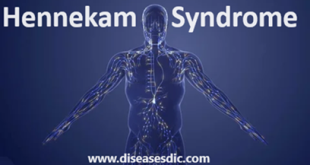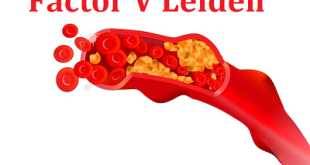Definition
Hemolytic anemia is a medical condition in which the life span of red blood cells is either reduced or prematurely destroyed.The condition of red blood cells being destroyed is called hemolysis. Red blood cells act as a transport medium to carry oxygen to all parts of the body. If there is a lower amount of red blood cells, then the individual is said to be anemic.
Normally, a red blood cell lives for about 120 days. The body gets rid of old red blood cells through a process called hemolysis. It replaces the old ones with new ones through a process called erythropoiesis. In hemolytic anemia, hemolysis happens too early. This shortens the lifespan of red blood cells to less than 120 days.
Hemolytic anemia is due to some intrinsic and extrinsic factors. Intrinsic factors include inadequate hemoglobin production, defective production of erythrocyte cell membranes abnormal red blood cell metabolism. Whereas, extrinsic factors are immune system-mediated causes, hypersplenism, certain infections, poisoning of lead, stibine, and arsine, etc. Treatment of hemolytic anemia includes blood transfusion, steroid therapy, use of immunosuppressants, intravenous antibodies, splenectomy and many more.
Types of Hemolytic Anemia
There are two types of hemolytic anemia:
- Inherited hemolytic anemia (also called intrinsic hemolytic anemia) is caused by a defect in the red blood cells themselves and result when one or more genes that control red blood cell production don’t function properly. With these conditions, red blood cells are destroyed earlier than normal.
- Acquired hemolytic anemia (also called extrinsic hemolytic anemia) is caused by factors outside the red blood cell, such as antibodies from an autoimmune disorder, burns, or medications. In these conditions, red blood cells are usually healthy when they are produced by the bone marrow, but later they are destroyed directly in the bloodstream or get prematurely trapped and recycled in the spleen.
Types of inherited hemolytic anemia include:
- Sickle cell disease
- Thalassemia
- Red cell membrane disorders, such as hereditary spherocytosis, hereditary elliptocytosis and hereditary pyropoikliocytosis, hereditary stomatocytosis and hereditary xeocytosis
- Pyruvate kinase deficiency (PKD)
- Glucose-6-phosphate dehydrogenase (G6PD) deficiency
Types of acquired hemolytic anemia include:
- Immune hemolytic anemia
- Autoimmunehemolytic anemia (AIHA)
- Alloimmune hemolytic anemia
- Drug-induced hemolytic anemia
- Mechanical hemolytic anemias
- Paroxysmal nocturnal hemoglobinuria (PNH)
- Malaria, babesiosis, and other infectious anemias
Epidemiology
Two databases exist which provide a systematic exclusion of the population of people that are not “normal”: NHANES-III (the third U.S. National Health and Nutrition Examination Survey) database and the Scripps-Kaiser database. Through these databases, one can see there is no difference in hemoglobin values of men from 20 to 59 or women 20 to 49. This assists in studying patient populations whose values do fall out of the norm from these ranges.
African Americans are found to have a lower limit of normal hemoglobin concentration, lower serum transferrin saturation, higher serum ferritin levels, lower bilirubin levels, and lower leukocyte counts. This is thought to be due to the higher frequency of alpha-thalassemia and G6PD deficiency in the black population. G6PD deficiency is known to affect millions of people worldwide. Although it can be seen worldwide, HE is most predominantly seen in malaria-endemic regions of West Africa. Several forms of anemia are seen in these regions, as it is often thought to be protective against malaria. Overall hemolytic anemias cover a broad range of age groups, races, and both genders as several subcategories can be acquired or inherited.
Pathophysiology
Premature destruction of RBCs can occur intravascularly or extravascularly in the reticuloendothelial system, although the latter is more common. The primary extravascular mechanism is sequestration and phagocytosis due to poor RBC deformability (i.e., the inability to change shape enough to pass through the spleen). Antibody-mediated hemolysis results in phagocytosis or complement-mediated destruction, and can occur intravascularly or extravascularly. The intravascular mechanisms include direct cellular destruction, fragmentation, and oxidation. Direct cellular destruction is caused by toxins, trauma, or lysis. Fragmentation hemolysis occurs when extrinsic factors produce shearing and rupture of RBCs. Oxidative hemolysis occurs when the protective mechanisms of the cells are overwhelmed.
The etiologies of hemolysis are numerous. The hemoglobinopathies lead to splenic destruction and, in the case of sickle cell disease, likely multiple mechanisms of destruction. Inherited protein deficits lead to increased destruction in membranopathies. Enzymopathies result in hemolysis due to overwhelming oxidative stress or decreased energy production. In immune-mediated hemolytic anemia, antibodies bind with the RBCs, resulting in phagocytosis or complement-mediated destruction. The extrinsic nonimmune causes include microangiopathic hemolytic anemia (MAHA), infections, direct trauma, and drug-induced hemolysis, among others.
Causes
Your body makes new red blood cells in the bone marrow, the soft tissue in bones where all blood cells are formed. When you have hemolytic anemia, red blood cells are destroyed through a process called hemolysis.
There are several potential causes for hemolytic anemia, including:1
- Autoimmune diseases, in which your immune system perceives red blood cells as foreign invaders and then destroys them, such as lupus and vasculitis
- A blood clot
- Genetic disorders that affect red blood cells, such as glucose-6-phosphate dehydrogenase (G6PD) deficiency, sickle cell disease, and thalassemia
- Being exposed to some types of chemicals and toxins
- Having a blood transfusion from a donor who doesn’t have the same blood type as you
- Infections such as hepatitis, cytomegalovirus (CMV), Epstein–Barr virus (EBV), and others
Symptoms of Hemolytic Anemia
Hemolytic symptoms can be mild or more severe. They also can come on suddenly or develop over time. Typical symptoms include:
- Jaundice: This condition affects your skin, the whites of your eyes (sclera) and your mucous membranes, causing them to turn yellow. This happens when you have a high level of bilirubin caused by a breakdown of your red blood cells.
- Shortness of breath (dyspnea): This happens when you don’t have enough red blood cells carrying oxygen throughout your body.
- Fatigue: Fatigue is a sensation of being so tired that it affects your daily life and your ability to do your daily activities.
- Fast heartbeat (tachycardia): This condition means your heart is beating faster than it should. When your heart beats too fast, it doesn’t have enough time between beats to fill up with blood, and your heart can’t supply your body with the oxygen it needs.
- Low blood pressure (hypotension): Low blood pressure can be a symptom or a condition. It happens when your blood pressure is much lower than expected.
- Blood in your pee (hematuria): This can be a symptom of sickle cell disease.
- Enlarged spleen or liver: Your liver and spleen filter red blood cells as the cells move through your body. Red blood cells that are damaged or dying are trapped by your spleen and liver, which destroy the cells. A larger-than-normal spleen or liver may be a sign your red blood cells are damaged.
Risk factors
Oxidative stress in the setting of G6PD deficiency:
- Use of primiquine for malaria treatment
- Consumption of fava beans as part of a Mediterranean diet
- Use of dapsone for PCP or leprosy treatment
- Having sulfa drugs like trimethoprim-sulfamethoxazole for treatment of skin, urinary tract, or other infections
- Use of phenazopyridine for alleviating symptoms of dysuria
- Usage of nitrofurantoin for treatment of a urinary tract infection
Mechanical damage-related risk factors:
- Presence of a mechanical mitral or aortic valve
- High shear stress from extracorporeal membrane oxygenation (ECMO) circuit in patients undergoing cardiac surgery or with hypoxic respiratory failure
- Presence of left ventricular assist device for end-stage heart failure
Genetic conditions affecting red blood cells:
- Hereditary spherocytosis
- Hereditary elliptocytosis
- Paroxysmal nocturnal hemoglobinuria
- Sickle cell disease
Hemolytic Anemia Complications
Complications depend on the cause of the hemolytic anemia and include:
- Side effects of medicines. For instance, the increased risk of infection with corticosteroids.
- Gallstones or stones in the gallbladder
- Blood clots and blood clots in the lungs (pulmonary emboli)
- Kidney failure
- Shock
- Heart failure
Diagnosis
Your healthcare provider may think you have hemolytic anemia based on your symptoms, your medical history, and a physical exam. Your provider may also order the following tests:
Hemoglobin and haematocrit: This test measures the amount of hemoglobin and red blood cells in the blood.
Complete blood count (CBC): This test checks the red and white blood cells, blood clotting cells (platelets), and sometimes, young red blood cells (reticulocytes). It includes hemoglobin and hematocrit and more details about the red blood cells.
Peripheral smear: A small sample of blood is viewed under a microscope. Blood cells are checked to see if they look normal or not.
Other blood tests: These tests will check for lactate dehydrogenase, bilirubin, and haptoglobin which can causes ongoing hemolysis. Certain tests can find antibodies that cause hemolysis.
Urine tests: These tests can check for hemoglobin from red blood cells breaking down.
Bone marrow aspiration, biopsy, or both: A small amount of bone marrow fluid (aspiration), solid bone marrow tissue (called a core biopsy) often from the hip bones, or both are checked for the number, size, and maturity of blood cells. This test may also look for abnormal cells.
Microscopic view of (a) normal blood cells and (b) hemolytic anemia affected blood cells
What is the treatment for Hemolytic Anemia?
The treatment plan for a person with hemolytic anemia depends on the cause of the disorder. Treatment can also depend on the person’s age, medical history and how severe the anemia is.
Treatment options may include:
- Blood transfusions: To help to increase the number of available red blood cells to carry oxygen to the body tissues.
- Corticosteroids: Such as Prednisone can suppress an overactive immune system. This limits the destruction of the red blood cells. Common side effects may include weight gain, high blood pressure, acne, upset stomach and irritability.
- Immune globulin (IVIG): An intravenous infusion that decreases the destruction of red blood cells. It is often used to treat autoimmune hemolytic anemia. Common side effects may include fever, chills, headache, light-headedness, flushing, itching and a change in blood pressure.
In more severe cases, the person may have to stay in the hospital. They may receive the following treatments:
- Exchange transfusion: This is like a blood transfusion. The difference is that unhealthy blood cells are actually removed while being replaced with the same amount of healthy blood.
- Splenectomy: The location of red blood cell destruction may be in the spleen. As a result, the spleen may need to be removed. This treatment option is most often used in people who do not respond to other therapies.
- Immunosuppressive therapy: This therapy is used a treatment used to suppress the immune system. This may help when the red blood cells are being destroyed by the patient’s own immune system (autoimmune hemolytic anemia). These treatments are most often used in patients who do not respond well to other common treatments.
Prevention of Hemolytic Anemia
Some ways to prevent episodes of hemolytic anemia include the following:
- Factors that precipitate a hemolytic attack in sickle cell anemia like dehydration and low oxygen levels should be avoided
- A thorough testing of the blood group and the Rh factor should be done before a blood transfusion
- Avoid intake of medications that can precipitate hemolysis especially if you are suffering from glucose-6-phosphate dehydrogenase (G6PD) deficiency
 Diseases Treatments Dictionary This is complete solution to read all diseases treatments Which covers Prevention, Causes, Symptoms, Medical Terms, Drugs, Prescription, Natural Remedies with cures and Treatments. Most of the common diseases were listed in names, split with categories.
Diseases Treatments Dictionary This is complete solution to read all diseases treatments Which covers Prevention, Causes, Symptoms, Medical Terms, Drugs, Prescription, Natural Remedies with cures and Treatments. Most of the common diseases were listed in names, split with categories.








I have 2 questions
1. Is possible to cure Auto Immune Hemolytic Anemia (AIHA)???
2. If not possible to cure from AIHA what the solution???
Possibility of Cure: The potential for a complete cure for AIHA depends on the specific case. In some instances, the condition may resolve on its own or with treatment. Treatment often involves medications to suppress the immune system’s activity, such as corticosteroids or other immunosuppressive drugs. However, some cases may be more chronic or recurrent.
Management and Control: In cases where a complete cure is not possible, the goal shifts to managing and controlling the symptoms. This typically involves ongoing medical care, monitoring, and possibly long-term medication use. In severe cases or when other treatments are not effective, more advanced interventions such as splenectomy (removing the spleen) may be considered.
It’s essential for individuals with AIHA to work closely with healthcare professionals to determine the most appropriate treatment plan for their specific situation.
To understand for treatment